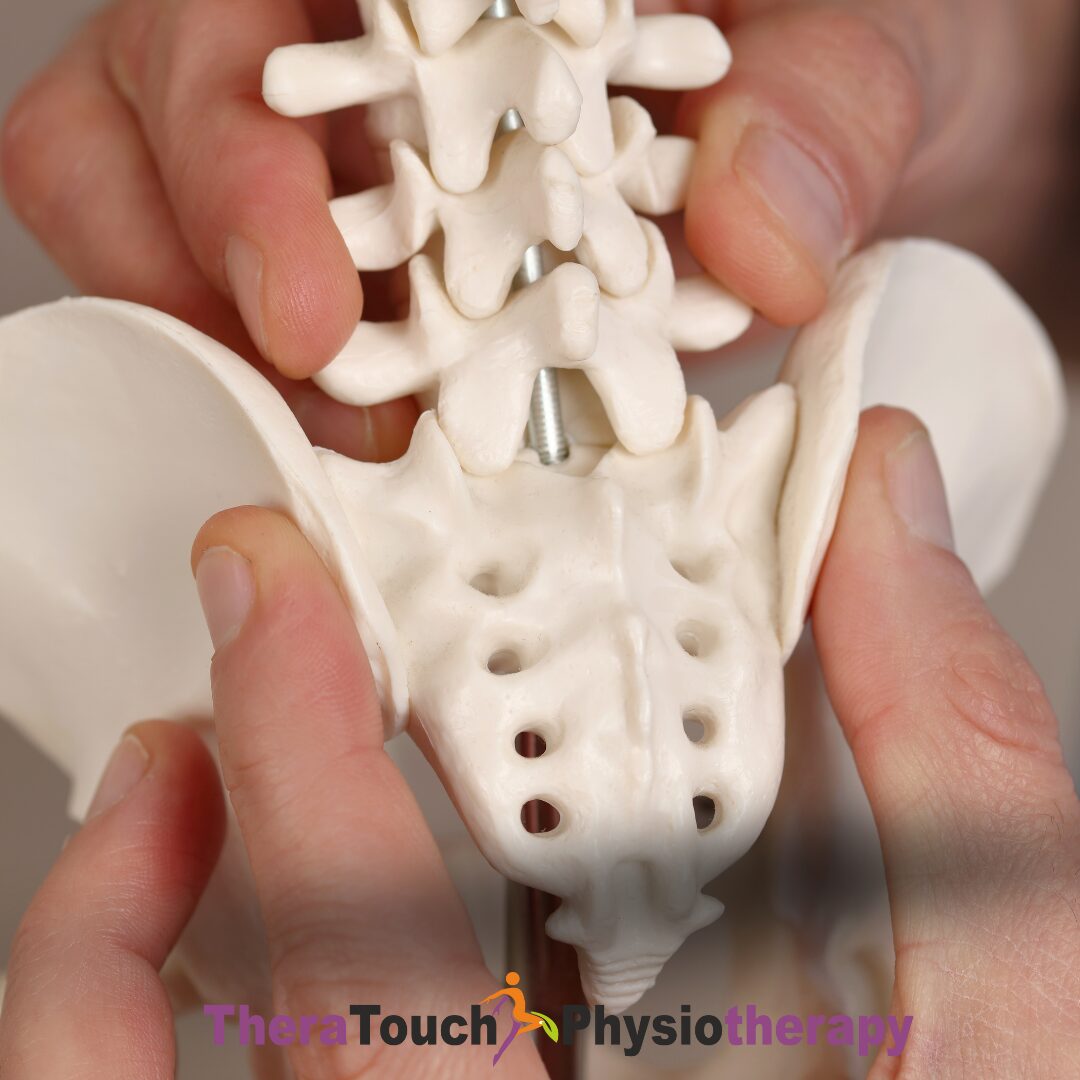Coccydynia: Understanding Tailbone Pain and How You Can Heal
What Coccydynia Means for You
Coccydynia is pain in your coccyx, or tailbone, the small triangular bone at the very bottom of your spine. You notice it most when you sit, stand up from sitting, or lean back against a chair. The pain may radiate into your buttocks, hips, or thighs. For some people, coccydynia feels like a constant ache; for others, it stabs sharply every time they sit down.
You may not think much about your tailbone until it starts hurting. But once it does, you quickly realize how central it is to your daily life. Sitting at work, driving long distances, or even relaxing on the couch can become uncomfortable. For women, the pain may worsen during periods or after childbirth. Even small tasks like using the bathroom or bending over can trigger sharp discomfort.
Symptoms You May Notice
The pain of coccydynia usually appears when you put pressure on your coccyx. Sitting on a hard bench, slouching on a chair, or leaning back against a surface can trigger the ache. When you stand up from sitting, the pain often intensifies briefly before easing. Some people feel persistent tenderness at the base of their spine. Others experience dull aches that flare into sharp jolts with sudden movement.
You may notice that bowel movements or sexual activity worsen your pain. Women sometimes describe increased discomfort during menstruation. Over time, constant pain may cause frustration, irritability, and difficulty focusing on tasks. Coccydynia doesn’t only affect your spine, it affects your mood, your mobility, and your daily comfort.
Why Coccydynia Happens
Your coccyx can become painful for several reasons. A fall that lands you directly on your tailbone often bruises or dislocates the bone. Childbirth can overstretch and strain the ligaments that support your coccyx, especially after long labor or assisted delivery. If you spend many hours sitting, particularly with poor posture, you may gradually develop inflammation in the coccyx.
Being overweight increases the pressure on your tailbone when you sit, while being underweight may leave you without enough natural padding, making the bone more exposed to stress. Arthritis can stiffen or irritate the small joints around the coccyx. In rare cases, infections or tumors may cause pain in this area.
How Doctors Diagnose Coccydynia
Your doctor will usually start by pressing gently around your coccyx to locate tenderness. They may ask you to sit, stand, and shift positions while they observe your pain pattern. Imaging tests such as X-rays or MRI scans may be used to check for fractures, abnormal movement, arthritis, or other conditions. Sometimes, doctors evaluate your coccyx in sitting and standing positions to see whether too much mobility contributes to your pain.
Coccydynia is often a diagnosis of exclusion. This means your doctor rules out other spinal or pelvic conditions before confirming it. The process may take time, but identifying the true cause helps ensure the right treatment.
How You Can Treat Coccydynia
Most cases of coccydynia improve without surgery. Your doctor will likely begin with conservative treatments. Using a cushioned seat (often called a donut cushion or wedge cushion) reduces direct pressure on your coccyx. Correcting your posture when you sit and standing up frequently to stretch also help. Over-the-counter pain relievers reduce inflammation and ease discomfort.
If your pain persists, your doctor may suggest steroid injections around the coccyx to calm inflammation. Injections often provide significant relief for weeks or months, allowing you to return to normal activities. Rarely, if your pain continues for years and other treatments fail, surgery to remove your coccyx (coccygectomy) may be considered.
How Pelvic Floor Physiotherapy Helps You
You might not think of your tailbone as part of your pelvic floor, but the two are closely connected. When your coccyx hurts, your pelvic floor muscles often tighten in response. This creates extra tension that pulls on your tailbone and prolongs your pain.
A pelvic floor physiotherapist helps you break this cycle. They guide you through exercises that release tight pelvic muscles, improve posture, and restore normal alignment. Manual therapy, gentle stretching, and breathing techniques ease muscle guarding and reduce stress on your coccyx. By retraining your pelvic floor, physiotherapy helps you sit more comfortably and regain mobility without constant flare-ups.
Daily Strategies You Can Use
You can support your recovery by adjusting your daily habits. Use cushioned chairs or carry a travel cushion when commuting or working long hours. Alternate between sitting and standing throughout your day, especially if you work at a desk. Avoid sitting on hard benches for long periods. Focus on posture, keep your spine aligned, your shoulders relaxed, and your weight evenly distributed.
Managing weight, strengthening your core, and practicing gentle physical activity such as walking or swimming all support your healing. Stress management also matters; when you feel anxious, your muscles tighten, and your pain often worsens. Relaxation techniques like meditation or yoga can calm both your body and your mind.
Complications and Long-Term Outlook
If left untreated, coccydynia may become chronic and interfere with your ability to work, travel, or enjoy leisure activities. Prolonged pain often leads to poor posture and secondary back or hip pain. Fortunately, most people improve with conservative treatment. Only a small percentage ever require surgery.
With the right care, you can reduce your pain, improve your sitting tolerance, and return to a normal lifestyle. Recovery may take weeks to months, but persistence pays off.
When You Should See a Doctor
You should see a doctor if your tailbone pain lasts longer than a few weeks, worsens despite self-care, or prevents you from sitting comfortably. If you notice new symptoms such as unexplained weight loss, fever, or shooting pain down your legs, seek medical attention immediately, as these may point to a different condition.

